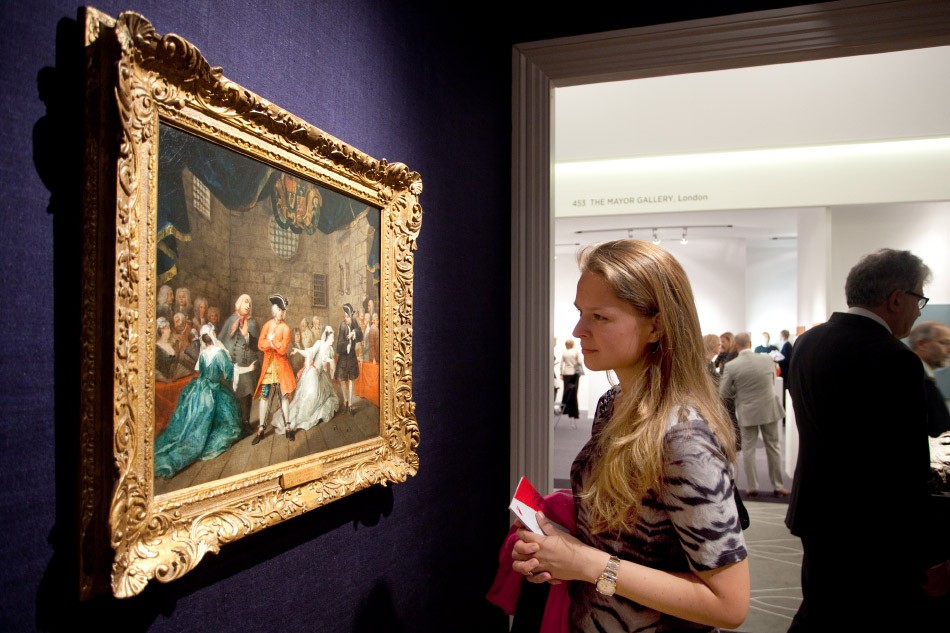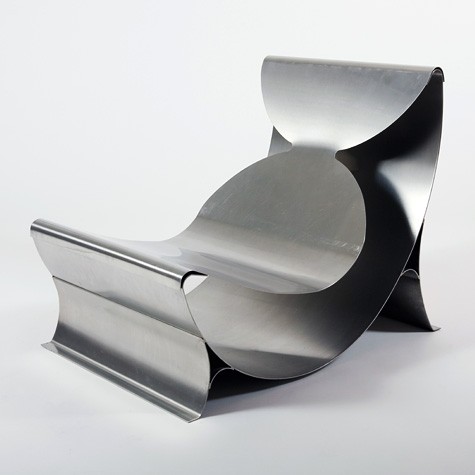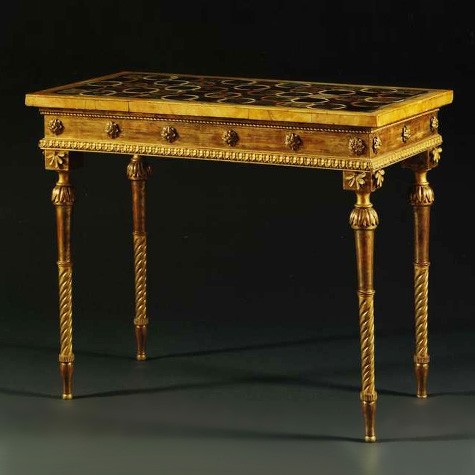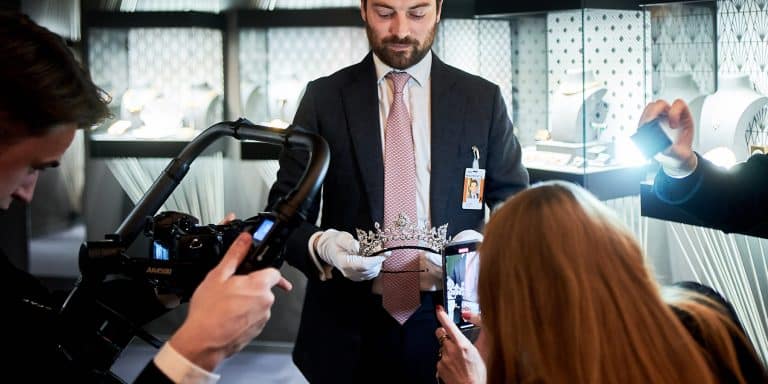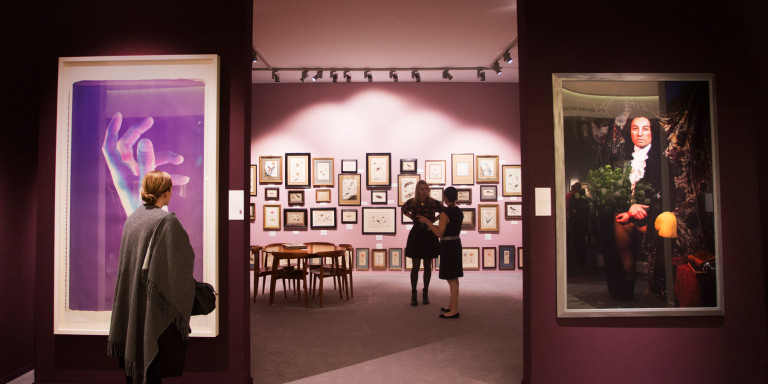
March 9, 2015The European Fine Art and Antiques Fair (TEFAF) mounts its 28th edition in Maastricht, the Netherlands, from March 13 to 22. Above: TEFAF Modern recently launched to augment the show’s more classical and Old World offerings (photo by Loraine Bodewes). Top: The entrance hall of last year’s fair (photo by Harry Heuts)
Mention Maastricht — the colloquial name for The European Fine Art and Antiques Fair (TEFAF), held annually in the charming city of Maastricht, the Netherlands — and most people think of centuries-old pictures and furniture commissioned by royal courts. While those rare treasures certainly continue to bring gravitas and prestige (not to mention the most discerning collectors) to the fair, which has long been the crown jewel in the international art and antiques fair circuit, in recent years TEFAF has faced the challenge of remaining relevant in a world where modern and contemporary art and design often draw the bigger crowds — and the bigger bucks. But considering that in 2014 some 74,000 visitors flocked to Maastricht — around 130 miles south of Amsterdam and 80 miles east of Brussels — it’s fair to say that the powers that be behind TEFAF are successfully staying fresh and drawing a younger crop of collectors. (For the sake of comparison, Art Basel Miami Beach attracted around 73,000 fairgoers in 2014.)
“The old guard is still there, but over the past few years there has clearly been some fresh blood, with more modern and contemporary art,” says New York interior designer Eric Cohler. “Not that Maastricht should become Art Basel, but it’s clear the fair, the grande dame of them all, is keeping up with the times.”
It’s no small feat to achieve that freshness without growing the fair beyond its already large proportions — there are 275 international dealers selling everything from antiquities to contemporary design at TEFAF’s 28th edition, which runs from March 13 through 22. “We don’t necessarily want to make the fair any bigger than it already is, and some of our newer initiatives have been born out of this frustration of not being able to invite more dealers,” says the eponymous owner of Ben Janssens Oriental Art, in London, who oversaw the introduction of numerous innovations while chairman of the the fair’s executive committee from 2007 through 2013 . (He is now chairman antiquairs.)
One such new initiative is “Night Fishing,” a guest-curated selling exhibition of contemporary sculpture to supplement the existing modern and contemporary program. The name refers to the 1939 Picasso painting Night Fishing at Antibes, which depicts fishermen engaged in the age-old method of attracting fish to the surface with a lamp — “much as traditional and ancient art forms attract and act as beacons to makers of contemporary art,” say the press materials. Guest curator Sydney Picasso, an art historian, author, collector (and former wife of Claude Picasso, Pablo’s son), has brought together eight prominent galleries who otherwise would not be participating in TEFAF, including Thaddaeus Ropac, of Salzburg and Paris, which is presenting a work by Georg Baselitz, and Düsseldorf’s Galerie Hans Mayer, which is showcasing 20th-century video artist Nam June Paik. Shining the spotlight on more recent work is not a move to change the nature of the fair, necessarily, but to bring in different collectors who might then discover the allure of objects from other genres or periods. “That kind of buying cross-fertilization really happens at Maastricht, and in recent years it’s become quite a prominent feature,” says Janssens.
When spaces do open up, long wait-listed dealers jump at the opportunity — and rise to the occasion. “The fair is legendary. Connoisseurship is very high, as are expectations,” says Suzanne Demisch of postwar design stalwart Demisch Danant of New York and Paris. Her gallery will be participating in the fair for the first time this year, in the TEFAF Design section, which launched in 2009. “We are breaking out things that we hadn’t planned on selling — things that have been in our reserves,” says Demisch. Among that cache are several pieces of furniture by the late French designer Pierre Paulin, commissioned by presidents Georges Pompidou and François Mitterand, as well as Maria Pergay’s extraordinary 1968 stainless steel Flying Carpet Daybed and Sheila Hicks‘s stunning 1984-85 Le Palmier tapestry.
New York’s Paul Kasmin Gallery, meanwhile, now in its second year at TEFAF, has commissioned eight limited-edition works by the Swiss-born, Paris-based designer Mattia Bonetti, who is also designing the booth with his own wall panels, pedestals and trompe l’oeil wallpaper. Kasmin will be showing works by Simon Hantaï, Robert Motherwell and Chaim Soutine as well. “As an art fair, Maastricht is unparalleled in terms of the quality of the works, and, accordingly, we include only historically important objects in our installation,” says Kasmin.
What 1stdibs Dealers are bringing to TEFAF

At last year’s TEFAF, the fair’s Paper section included a loan exhibition from Munich’s National Graphic Arts Collection. Titled — and focused on — “Timeless Beauty – The Female Form,” the show featured drawings of womanly figures of all varieties by artists including Rembrandt, Manet and Picasso. Photo Harry Heuts
Insiders agree that this devotion to historical importance — across categories — is clearly what sets TEFAF apart from other fairs. “All of the top dealers in their field spend the year gathering the often extremely rare and unique works that are simply not seen anywhere else on the circuit,” says London-based art adviser Wendy Goldsmith, who has been attending Maastricht annually for the past 15 years. “The cash-rich but time-poor clients that we see these days often feel that this is the only fair that they need to attend, and they spend their time looking and thinking before purchasing, with many of the sales coming at the end of the fair, instead of the opening-day frenzy that is often seen at the purely contemporary fairs.”
What 1stdibs Dealers are bringing to TEFAF
New York and London antiques dealer Carlton Hobbs, whose gallery specializes in pieces from the 17th through 19th centuries with royal or aristocratic provenance, notes that these days collectors want unique and extremely rare items more than ever before. “Every year at TEFAF I see more and more dealers finding that their target is for the really great, really unusual pieces,” he says. For his part, Hobbs is bringing an assortment of museum-worthy objects that the gallery has been busy researching, including a set of four massive watercolors depicting prehistoric creatures in their habitats, from around 1840-50. The images hail from the mineral cabinet of the Archduke Stephan of Austria. “They’re quasi-technical drawings with an artistic overtone,” says Hobbs, noting that the archduke was “very enlightened and on the cutting edge of such scientific exploration” in Vienna in the mid-19th century. “People are going crazy for this kind of thing,” adds Hobbs, who is also bringing a set of Louis XIV painted-silk panels and an extraordinary circa-1780 inlaid éclosoir – a complexly constructed cabinet with geometric marquetry.
As for the audience for museum-worthy antiques like those Hobbs is sourcing, Janssens has noticed that it’s not just curators and super-established collectors in the market anymore. “The new collector is definitely someone prepared to look at things they might not have in the past,” he says. “People come to the fair for different disciplines, but I’ve noticed that people will now pick something up or notice something, and they have no idea what they are looking at, but they like the look of it.” As interior designer Cohler points out, “I’ll buy an exquisite antique — a Louis XVI chair, say, or a great Kentian robustly gilded console, and it becomes a piece of sculpture in the living room.”

